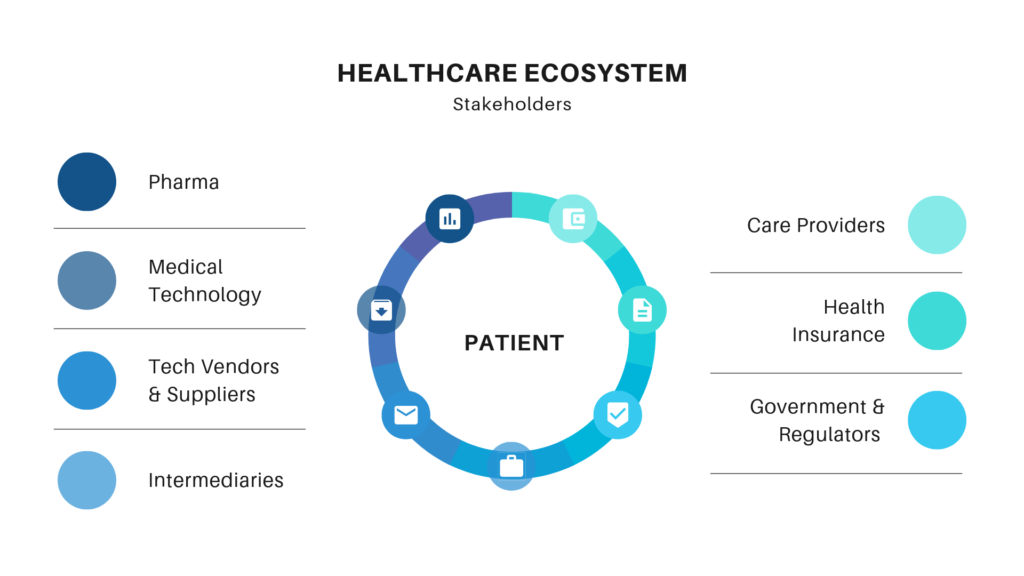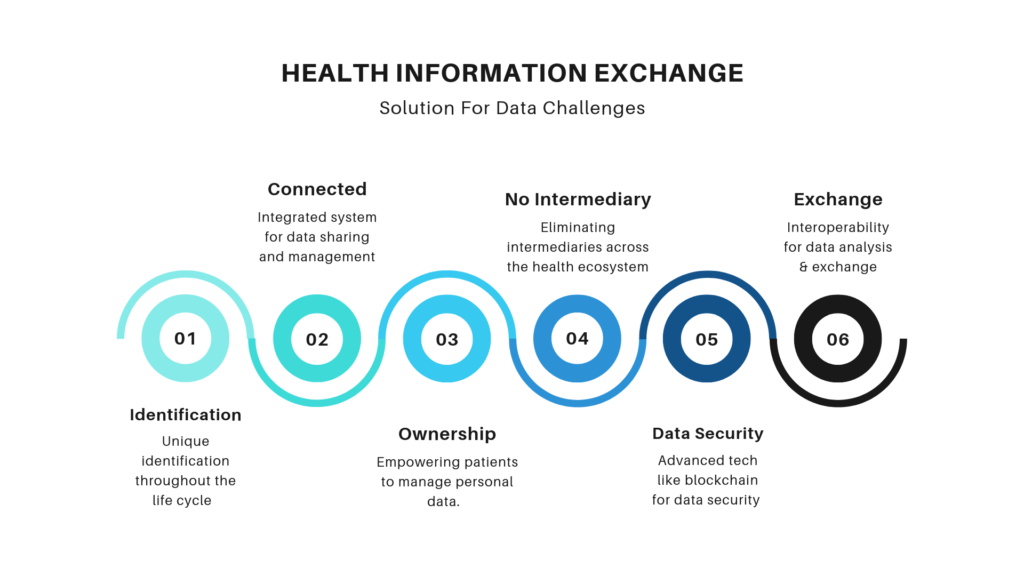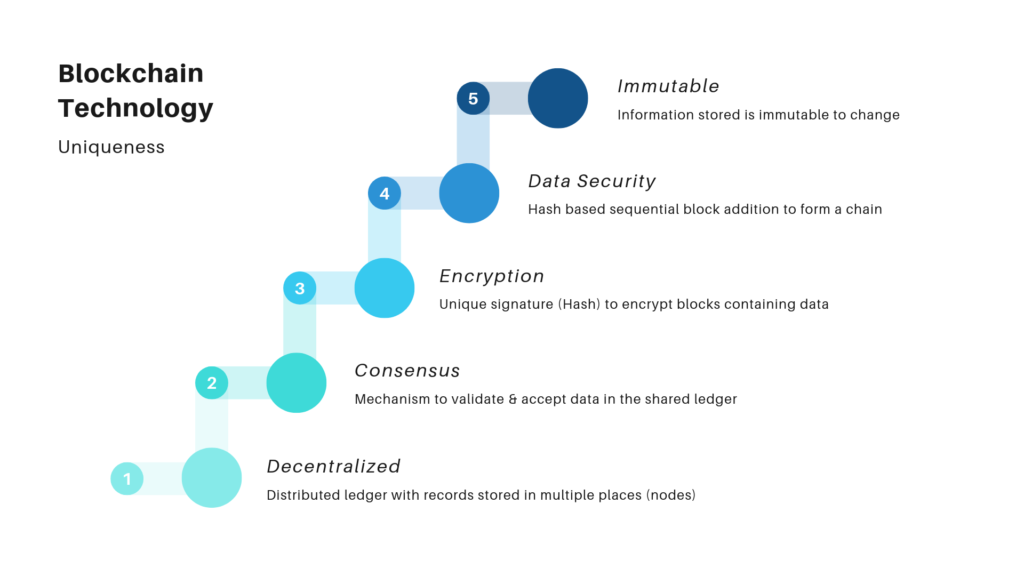This post is in continuation of our previous post titled “Health Information Exchange: Reaching Last Mile Patients Through Technology” While Health Information Exchange (HIE) is a global necessity, its importance is paramount for any of the developing nations. For the sake of this post, we shall be using India as a reference nation for its sheer size and complex healthcare structure.
The healthcare ecosystem comprises of various interdependent stakeholders generating insurmountable data. Technology has always played a key role in establishing a real-time workflow throughout the healthcare ecosystem. The problem is that, despite all the technological interventions, the larger part of the healthcare ecosystem is still broken, fragmented and disjointed. The leads to data leakage and loss in various forms.
In the case of developing economies, the ecosystem is more disjoint due to limited adoption of technology. Over the years the disjoint system has lead to an environment which lacks trust, transparency, interoperability, and data wastage.
From the 1920s when the first medical records emerged to 2018 when healthcare organizations are forecasted to invest $1.5 trillion on technology, quality & affordable healthcare is still not reachable up to the last mile.
Challenges & Opportunities For The Emerging Economies
The World Health Organization (WHO) has charted a goal of Universal Health Coverage (UHC) for everyone by 2022. This means capturing health information across the ecosystem and touchpoints. Most of the developing countries will be required to leverage the relevant technologies to access, track, optimize, and share the information in a secure manner. To generate meaningful health information will require participation from all the stakeholders in the value chain. For a nation with +1.3 billion people, it’s a big challenge to achieve. At the same time, it is also an opportunity to upgrade the healthcare delivery model to a stage where it could reach up to the last mile of the population.
India has launched the Ayushman Bharat Yojana to meet the UHC goals of the WHO. The success of this scheme hugely depends upon the adoption of the right technologies.
In a nutshell, health information management is the problem that every country is trying to solve. This cannot be done without technological intervention. The National Health Policy (NHP) has identified the need, among other goals, for establishing a Health Information Exchange (HIE) by 2025. The focus is mainly on HIE because it solves the problem of interoperability, process optimization, and health information management on the backdrop of advanced technologies like Blockchain, Artificial Intelligence, IoT, Machine Learning, and Edge Computing.
Blockchain has a key role to play in any HIE for Data Security, Privacy, Trust, and Transparency.
Stakeholders Of The Healthcare Ecosystem
The healthcare ecosystem, reference India, comprises of eight stakeholders with each stakeholding unit having its own value chain. For Example, The pharma stakeholding unit comprises of pharmaceutical manufacturers, pharmaceutical suppliers, and retail pharmacies. To deliver effective & efficient healthcare requires real-time integration between all the stakeholders with patients being at the heart of healthcare.
What makes the structure of the healthcare ecosystem complex is the presence of unique value chain for each of the stakeholding units. To deliver quality healthcare requires connectivity between all the stakeholders. This is the reason why the industry is undergoing digital transformation to eliminate the intermediaries and improve data connectivity.

HIE will enhance Accessibility, Availability, and Affordability of Primary, Secondary, and Tertiary Healthcare up to the last-mile of the population.
Key Data-Related Challenges That HIE Will Solve
The fundamental of health information exchange lies around real-time secured connectivity for healthcare information exchange for better analysis and care. Data is what gets exchanged from one stakeholder to another, Care is what gets prescribed on the basis of those data. Hence, the DNA of a successful HIE lies in efficient & effective data management and experience.

Building The Next Generation Healthcare Ecosystem: Blockchain Matters
Blockchain has a key role to play in building a robust & futuristic health information exchange due to its Distributed, Shared, and Immutable nature. The technology not only helps in enhancing the process transparency & traceability but, also helps in optimizing the process by eliminating the intermediaries.
The biggest flaw in the traditional healthcare model is that it is not centered around patients but the care providers. This resulted in a technological framework which was not integrated across the stakeholders. This centricity towards the care-providers has resulted in the loss of trust & transparency, issues around data privacy, data security, and shift in control from patients to the care providers.

The shift towards “Keeping Patients At The Heart Of Healthcare” will require decentralization at various levels to build an optimized closed-knit ecosystem.
In our next blog post read about the role of blockchain in health information exchange.
Follow Us On LinkedIn To Stay Updated With Our Digital Assets. To Subscribe To Our Blogs And Other Updates Click Here



1 Comment